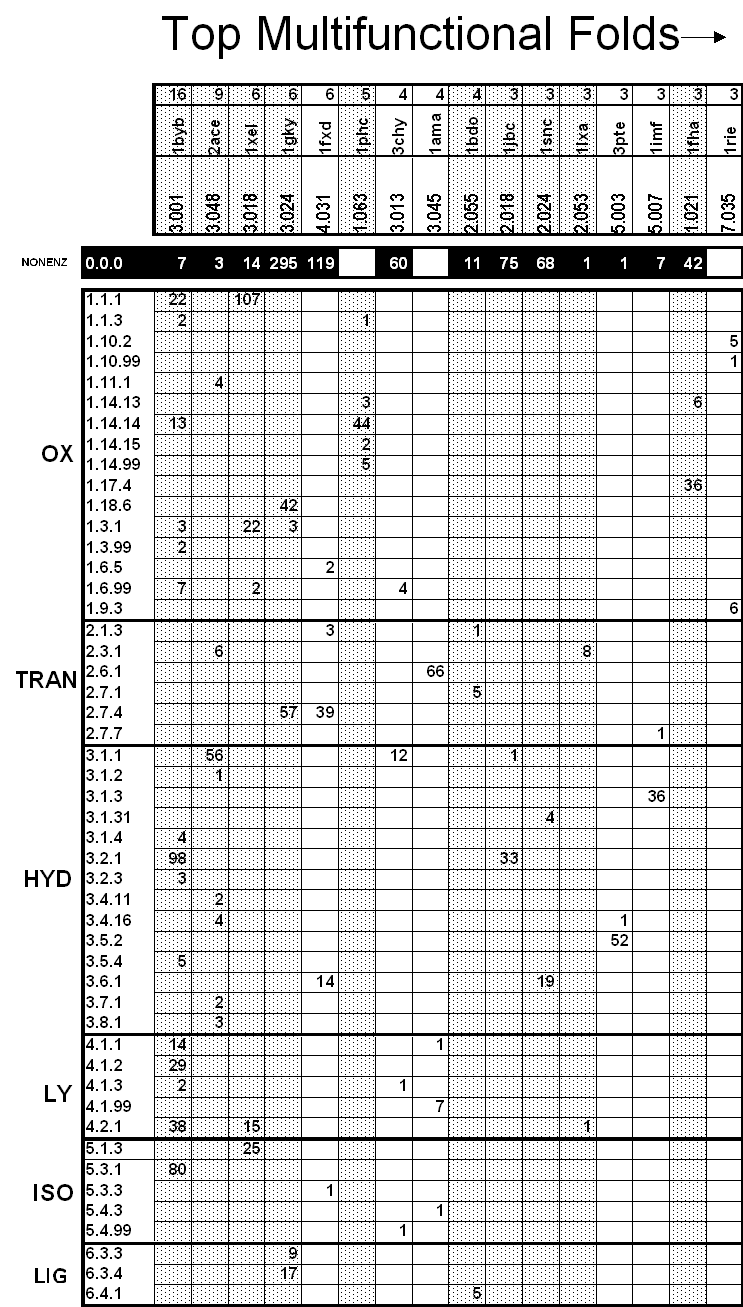 |
 |
 |
 |
 |
 |
 |
 |
 |
 |
 |
 |
 |
 |
 |
 |
 |
 |
 |
 |
 |
 |
 |
 |
 |
 |

Figure 4, The Most Versatile Folds The functions associated with the 16 most versatile folds are shown. Values in the table denote the number of matches between a particular fold type in pdb95d (designated by its fold number in SCOP 1.35) and an enzyme category (represented by the first three components of the respective EC numbers). Here and in the following tables the same parameters were used for matching as in Figure 2. The numbers in the top row indicate the number of functions a particular fold is associated with. The identifiers above the fold numbers are either PDB or SCOP identifiers of representative structures (the latter only if the PDB entry contains more than one domain or chain). (See the caption to Table 3 for the syntax of scop identifiers.) The first row in the table with the artificial 0.0.0 EC number shows the number of matches with non-enzymatic functions. Among the two all-alpha folds in the table, Cytochrome P450 (1.063) is exclusively enzymatic, associated with five different enzyme functions, all related to Cytochrome P450. Only one alpha+beta fold, Ferredoxin (4.031), is present in the table, predominantly with matches with non-enzymatic ferredoxins, but also with enzymes in four different enzyme classes. In the multi-domain class, Beta-Lactamase/D-ala carboxypeptidase (5.003) has most matches with penicillinase (EC number 3.5.2) and only one match with a non-enzyme, which also binds penicillin but has no enzymatic activity . The class of small domains is represented only with one fold, Membrane-bound rubredoxin-like (7.035), and has matches only with enzymes. 
|